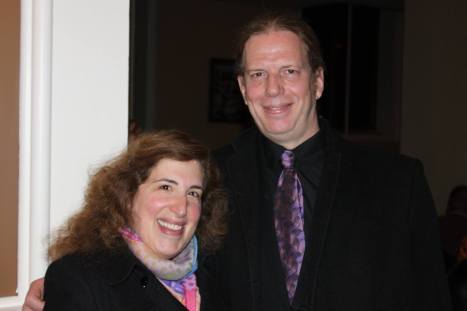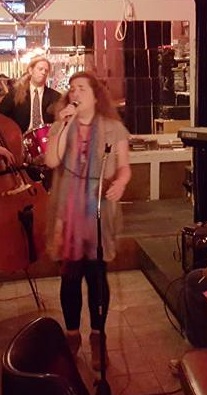
This year has been phenomenal so far, and Carol Deminski Productions has gotten off the ground! I’m now managing three different bands: Carol Deminski and the Little Jazz Birds; The Carol Deminski Dixieland Band and now… the Raise the Bar Band too!
The Raise the Bar Band came out of my desire to play a wider variety of music beyond jazz, and to keep my band members, and me, playing out on a regular basis.
I started by thinking about what kind of music I wanted to focus on, which wasn’t easy. There are so many bands out there doing cover material, and I didn’t want to be playing songs that — while I enjoyed them — were being over-played. In my opinion, we don’t need another band doing Allman Brothers and Jimmy Hendrix covers, although I love both of those artists / bands.
So with that as my guide, I set off on a journey to bring together songs I felt were cohesive as a group. Things I liked and would want to sing, and would nod to my roots as a singer coming out of a jazz and blues tradition. For example, Stevie Wonder’s Sir Duke is a pop song with a terrific dance beat, but the lyrics talk about the great lineage of jazz heritage we have in the works and performances of Louis Armstrong, Duke Ellington, Ella Fitzgerald, and others. So yes, that’s on the list.
Certain artists began to pop up on my radar as I spent many hours listening to songs I loved, and then meandering around on YouTube, serendipitously moving from one video to the next with “suggestions” that sometimes appealed, and many times didn’t. This process of coming up with a core repertoire took weeks. Songs moved back and forth between a primary and secondary list (which I still have) and then even within the primary list, became further prioritized based on what might make sense for a 3 hour show … the typical length of time a band plays.
I’m often told that I’m organized, and I don’t disagree. That said, the process of finding the initial band repertoire was a lot of FUN. I wound up with early rock and roll, mixed in with fun “classic oldies” that people will know and love – but haven’t heard in awhile – along with New Orleans flavored material too. ALL of it is highly danceable too.
While I was doing that, I was simultaneously pulling together a group of musicians who wanted to do this music. That was also challenging because it’s no great secret that music is not a high paying endeavor.
—->I could diverge at this point and do an entire diatribe on how musicians are vastly underpaid for their talents, but I won’t. <—-
So for a musician to agree to get involved with my project, it meant a bunch of things. The music I was choosing was something that appealed to them, and they would enjoy playing it. Maybe they knew a bunch of the songs already, and they were willing to learn the ones they didn’t. And very importantly, they would be willing to REHEARSE.
Rehearsals are a dirty word to some musicians. For those that don’t want to rehearse, they will flat out refuse to get involved in a band project because it takes too much time. I get it, even if I may not like it! There has to be a balance between how much time you spend learning new material, and working on your own practice, which good musicians ARE doing on their own.
So I was very lucky to find excellent quality musicians to play with who agreed to participate in rehearsals. It’s not like we’re rehearsing every week, but we have to be able to get together just enough to nail down song introductions and endings, and for everyone to know their parts.
…so far, so good. I had a list of songs I liked, and group of musicians who wanted to play those songs with me.
The next hill to climb was … who would give us a chance to play this material at their bar / nightclub / restaurant, etc?
This is the part of being a bandleader that is pretty tough. Without existing relationships with club bookers where this kind of material was being performed, it meant I had to go to the phones and start from scratch. Until now I’ve been booking jazz gigs, so I’m in the process of expanding my reach to venues who want cover bands, and those types of venues are usually quite different.
I’ve spoken to some bandleaders and others about this part of the business, and they absolutely detest it. Some people dread making cold calls because of the rejection they have to face.
When I first started the process of making these calls, I didn’t like it either. It might take 15 calls with a NO answer to get to one YES (maybe more.) The amount of follow up to get the right person on the phone AND get a yes from them is time consuming. But now, after months of ploughing in and just doing it, I find I enjoy “the hunt” and “the close.” There’s a satisfaction when I book a new venue where I haven’t played before, and I’ve been able to establish enough of a rapport with the booker so that my band has a shot to come in, wow the crowd, and be invited back for that extremely important second gig.
Thankfully, given my time and energy, my band is now booked for a couple of gigs, and once I’m able to have my band on videotape playing this material, I’m 100% sure I will be able to book even more gigs.
If you have read this far, please be sure to visit the Raise the Bar band page here: http://CarolDeminskiProductions.com/raise-the-bar-band. There you’ll see a photo collage of artists that inspired me for the band’s song list, and photos of band members.
If you are also in New Jersey, and want to attend a Raise the Bar Band show, go to the Carol Deminski Productions website and check out the SHOWS tab, for a complete calendar!
THANKS!
Filed under: live performance, Music, Singing | Tagged: band, coverband, music, RaiseTheBarBand | Leave a comment »



















